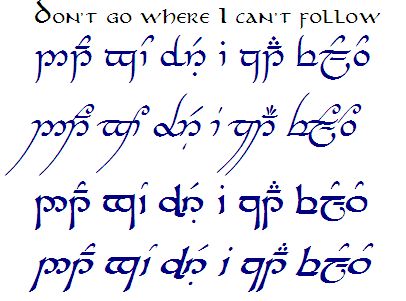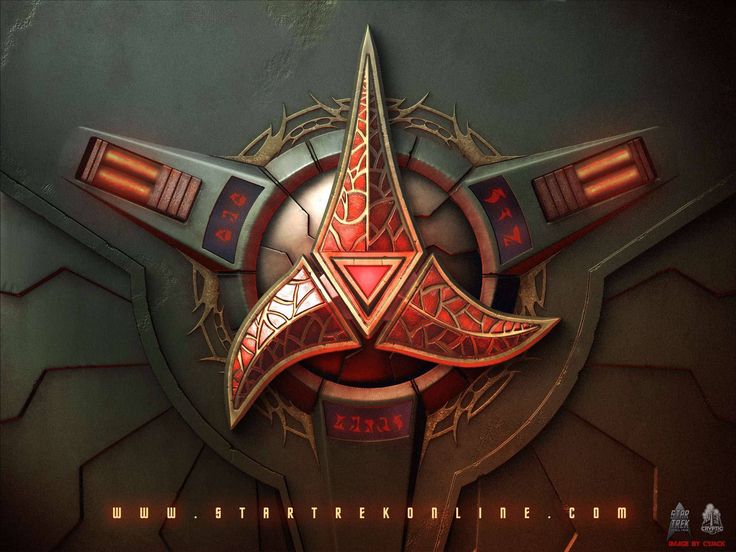“Language is a process of free creation; its laws and principles are fixed, but the manner in which the principles of generation are used is free and infinitely varied. Even the interpretation and use of words involves a process of free creation.” – Noam Chomsky

Have you heard of constructed languages? If you’re a movie aficionado, there’s no way you are not familiar with languages like Klingon or Na’vi or Dothraki. In this article, we’ll be discussing about the constructed languages around the world. These languages are not naturally developed. They are constructed on purpose by experts in language science. Constructed languages, mostly referred to as conlang, are constructed or developed with strategic and scientific reorganization of sounds, grammar, and vocabulary from one first language. Most of the time, conlang is constructed as a totally individual language from nothing for fiction and other creative purposes.
Although conlangs are built with a huge amount of borrowed language syntax and vocabulary, they are not used as replacements for the first language. Some of these languages are evolved from other constructed languages. Because of its natural language tinge and simple nature, conlangs are still on the rise.
Some Historical facts about Conlang
The first known constructed language was Hildegard of Bingen’s Lingua Ignota, created in the 12th century. The concept did not attract significant interest until the language Volapük was created in 1879. Volapük was popular for some time and apparently had a few thousand users, but was later eclipsed by the popularity of Esperanto, which arose in 1887. Several other languages, such as Latino sine Flexione and Idiom Neutral were also put forward. It was during this time that French mathematician Louis Couturat formed the Delegation for the Adoption of an International Auxiliary Language.
Examples of Constructed Language in the Real World
Esperanto

Esperanto is by far the most widely spoken constructed language in the world. Approximately 2 million people speak Esperanto worldwide. The language was created by Polish-Jewish ophthalmologist Ludwik Lejzer Zamenhof in 1887.
Let me mention one or two fun facts about the conlang here:
Fun fact 1: Initially, the inventor wanted Esperanto to be a universal second language. The goal was quite an altruistic one—to help people communicate freely despite their diverse ethnic and territorial backgrounds.
Fun fact 2: Esperanto is still alive today and “to speak Esperanto is to become an automatic citizen in the most welcoming non-nation on Earth.”
Fun fact 3: In the Charlie Chaplin movie “The Great Dictator”, the shop signs in the Jewish ghetto are written in Esperanto. (Go watch the movie and tell me what you see.)
Novial
Novial is a constructed international auxiliary language created by Prof. Otto Jespersen, a Danish linguist. The language was designed to address difficulties that were found in the Esperanto language. The vocabulary was borrowed largely from the Germanic and Romance languages; the grammar from English. Jespersen introduced Novial language in his book “An International Language” in 1928. After his death in 1943 the conlang also lost its influence. It was with the 1990s’ new wave of Internet all over the world, Novial was rediscovered.
Ido Language
Ido is a constructed language derived from Reformed Esperanto. The language was created in 1907 to be a universal second language for people all over the world.
Ido uses the same 26 letters as the English (Latin) alphabet, with no diacritics.
The vocabulary of Ido is majorly derived from French, English, Italian, Latin, Spanish, German, and Portuguese. The Esperanto speakers can acquire this language quite easily.
Fun facts about Ido:
Fact 1: Many works of literature have been translated into Ido including The Little Prince, the Gospel of Luke, and the Book of Psalms.
Fact 2: In 2020, Ido still survives with 24 native speakers in Finland.
Ro
Ro is a conlang designed by Edward Powell Foster in 1904. In Ro language, words are constructed using a category system. All words starting with “bofo-” signify colors; the word for red is “bofoc”, and yellow is “bofof”. All words starting with bu are geographical areas like the US called Budval. In his words, he describes Ro as a language that acts as a picture and gives a hint. The language has been described as a philosophical language. Ro alphabet consists of five vowel letters and twenty-six alphabets. After working on the language for about two years, Foster published the first booklet about Ro in 1906.
However, Ro has been criticized for its difficulty in differentiating between two words because mostly one consonant makes the difference in meaning.
Slovio
Linguist Mark Hucko created Slovio in 1999. This international auxiliary language is primarily designed to help Slavic speakers communicate with ease. While the Slovio grammar is borrowed from Esperanto, the vocabulary of the conlang comes mostly from Slavic languages. The Slovio language is designed with simple spellings, articulation, and grammar.
Approximately four hundred million people comprehend Slovio and the language can be typed on any keyboard, including the US keyboard.
Beloved Conlangs from Pop Culture
The aforementioned conlangs are not found in pop culture, as they were designed for people to communicate in real life. But most of the conlangs that we know and love are created and spoken by fictional characters. Let’s have a brief overview of some of these pop culture conlangs:
Elvish Languages (The Lord of the Rings)
As the name suggests, Elvish languages are used by Elves in a fantasy setting. The philologist and fantasy author J.R.R. Tolkien created many languages including Quenya and Sindarin for his Elves. He originally featured these Elvish conlangs in his golden globe winner film franchise “The Lord of the Rings”.
The languages have quickly spread into modern-day use. Tolkien was first a philologist and then an author. He stated that his stories are the byproduct of his language. He created languages first for his mythos. Qenya was the first of the Elvish languages. The Finnish language influenced the phonology and grammar of Qenya, while the Welsh language influenced Sindarin, the other completed Elvish.
Tolkien began inventing Elvish when he was in school in the early 1900s. He used his familiarity with Latin, Finnish, Spanish, Italian, Greek, Old Norse, Gothic, and Old English to create his world of related languages and wrote that his fascination with Finnish was particularly influential in the Elvish conlangs. Tolkien constructed many other languages throughout his life, as well.
Klingon (Star Trek)
Klingon is the constructed language spoken by a fictional alien race called the Klingons, in the Star Trek universe. Initially started as a gibberish spoken by aliens in the Star Trek franchise, Klingon was later developed into a full-fledged language by linguist Dr. Marc Okrand.
Marc mentioned the fan-favorite Conlang in his 1985 book The Klingon Dictionary. Klingon was designed on purpose as an alien language. The basic sounds of the language and a few words were devised by actor James Doohan (Scotty) and Jon Povill, the producer of Star Trek: The Motion Picture. It was in the same movie where Klingon was heard for the first time. Up until then, Klingons communicated in English.
Some fans around the world have learned the conlang, and as estimated by the creator Okrand, almost 100 people can speak fluent Klingon. Language lovers and hobbyists have studied the Klingon language. At least nine great works of world literature have been translated into Klingon till now: Hamlet (Hamlet), ghIlghameS (the Epic of Gilgamesh), chIjwI’ tIQ bom (The Rime of the Ancient Mariner), paghmoʼ tIn mIS (Much Ado About Nothing), pInʼaʼ qan paQDIʼnorgh (Tao Te Ching), taʼpuq mach (the Little Prince), Sun pInʼaʼ veS mIw (the Art of War), ‘aS ‘IDnar pIn’a’ Dun (The Wonderful Wizard of Oz), and QelIS boqHarmey (Alice’s Adventures in Wonderland).
Klingon has become a popular language worldwide which inspired many interesting events around the world. The American sit-com “The Big Bang Theory” has many scenes which mention Klingon, like this one:
Parseltongue (Harry Potter)
Parseltongue is the magical language of serpents, which Harry Potter himself also spoke. Though not as fully developed as Elvish or Klingon,
The creator of Parseltongue is Francis Nolan, a professor of phonetics at the University of Cambridge. Like previous conlangs such as Knlingin or Elvish, Parseltongue does not follow a set of basic sounds and sentence structures. It has features of Bantu and Uralic languages. Everything is voiceless. Its morphosyntactic alignment is unique.
Dothraki (Game of Thrones)
Dothraki is a fictional conlang used by George R.R. Martin’s fantasy novel series A Song of Ice and Fire. The language is also used in the television adaptation of the series “The Game of Thrones”. In the series, Dothraki is spoken by a nomadic tribe. The conlang comprised 3163 words till September 2011.
High Valyrian (Game of Thrones)
High Valyrian is another conlang used in the Game of Thrones by the House Tragaryen. Petersen created more than 5,000 High Valyrian words and four grammatical genders for this language.
Na’vi (Avatar)
The Na’vi language is an imaginary constructed language made for the 2009 James Cameron movie Avatar. In the cli-fi movie, the Na’vi is a race of sapient humanoids indigenous to Pandora, the extraterrestrial moon. The creator of the language was Paul Frommer, a professor and linguist at the USC Marshall School of Business.
The film-maker James Cameron wanted the language to be a perfect match for the sound and tone of the film. As instructed by Cameron, Frommer designed the Conlang with realistic sounding vocabulary and syntax making it easy to learn by the actors.
How to Construct a New Language for Fiction?
So if you are a fantasy fiction writer and want to create a conlang for your imaginary characters, here are some basic steps that will get you started:
First, choose a name for the language: The name should match the people or creatures of the fantasy world. Just like you handpicked names for your characters and places in your story, pick a name that fits the vibe there.
Then, it’s time to wake up the grammar ninja in you. Write down the grammatical structures and rules for the language. It’s the fun part because, you know. You can make your own grammar rules.
Take help of a conlang that Exists already: This would be your third step. When you base your language on an existing language, the process becomes easier and the vocabulary becomes more memorable.
Combine words from another language and create new words: Play around with words, be witty. That’s the trick.
Record everything while creating: Keep detailed records of everything about the new language, including grammatical rules, words, and alphabets. Don’t risk losing your precious work.
Practice your new language: Once you finish creating the new language, practice it yourself before you share it with the world. Then teach your friends and family and have fun practicing it with them. Then you can take it to the next level. Maybe consider writing a story or a poem in the new language, or translating a story or a short book into the new language.
Happy creating !

